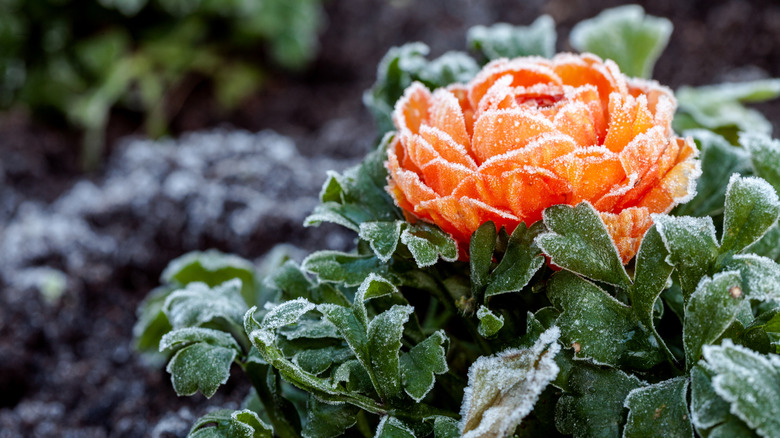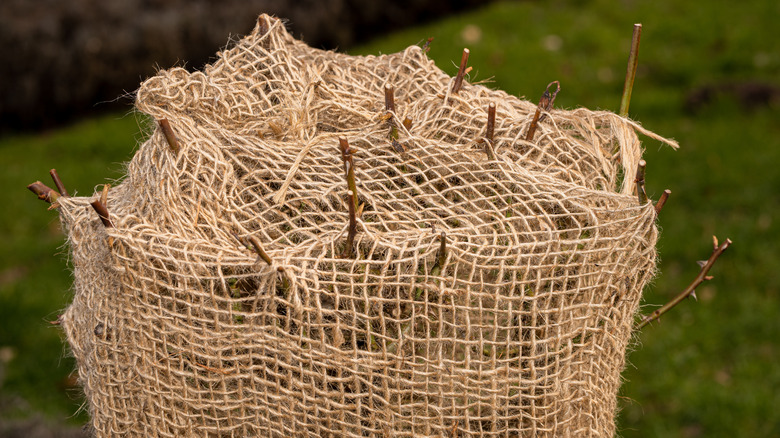The Eco-Friendly Material You Can Use To Protect Plants From A Spring Freeze
When spring hits the air, plant lovers and gardeners everywhere let out a sigh of relief — the sun is shining, temperatures are climbing, and those sleepy, dormant plants finally get their moment to shine (again). But don't let those sunny afternoons and 70-degree days fool you. Chilly mornings and unexpected nighttime dips are still very much in play, and they can put your plants at risk of frost or freezing, potentially damaging or even killing new growth. Luckily, burlap, a natural and eco-friendly material, can help protect your plants from frost and a surprise spring freeze.
Made from jute, a natural and sustainable fiber, burlap is a breathable material that offers just enough insulation to trap heat from the ground. While it's busy keeping your plants warm during an unexpected spring freeze, it's also giving back to the environment. Burlap is biodegradable, meaning it will decompose over time. So, once you've gotten your use out of it and decide to toss it, you can rest easy knowing it won't add to the litter and waste piling up on the planet.
What's more, the jute plant used to make burlap is considered a low-impact crop and typically doesn't require harmful pesticides to grow. Its eco-friendly qualities aside, burlap is also pretty easy to find. Most home improvement stores carry it, and it's readily available online through retailers like Amazon. Plus, since it can be hand-washed and hung or laid out to dry, you can reuse it season after season to keep your plant babies warm.
How to use burlap to protect plants during a spring freeze
When temperatures are expected to drop into the 30s, 20s, or even the teens, simply drape a piece of burlap loosely over your plants. Make sure at least 5 inches of fabric is tucked around the base to prevent it from blowing away. Use stakes to secure the burlap, and for added protection, raise it slightly off the plants to avoid direct contact as the burlap could get wet from rain or frost, which can weigh it down like any other fabric. For extra insulation, especially around larger plant beds, add a layer of straw or mulch around the base of the plant to help trap even more heat.
Before you go covering every plant in your garden to protect them from frost, keep in mind that some are hardier (there are plants that thrive in winter weather and cooler temperatures). Newly planted blooms, vegetables (aside from cold-weather crops like kale), and certain frost-sensitive perennials should be covered. But woody plants like roses don't necessarily need that extra protection. Do your research on each plant before going to great lengths to get them all covered.
Once temperatures have warmed up and the risk of frost or a freeze has subsided, you'll want to remove the burlap and store it away until it's needed again. Between its insulative properties and the fact that it naturally decomposes, typically within seven to 12 months, burlap is a win for both your garden (you can even line your flower pots with burlap!) and the environment.

